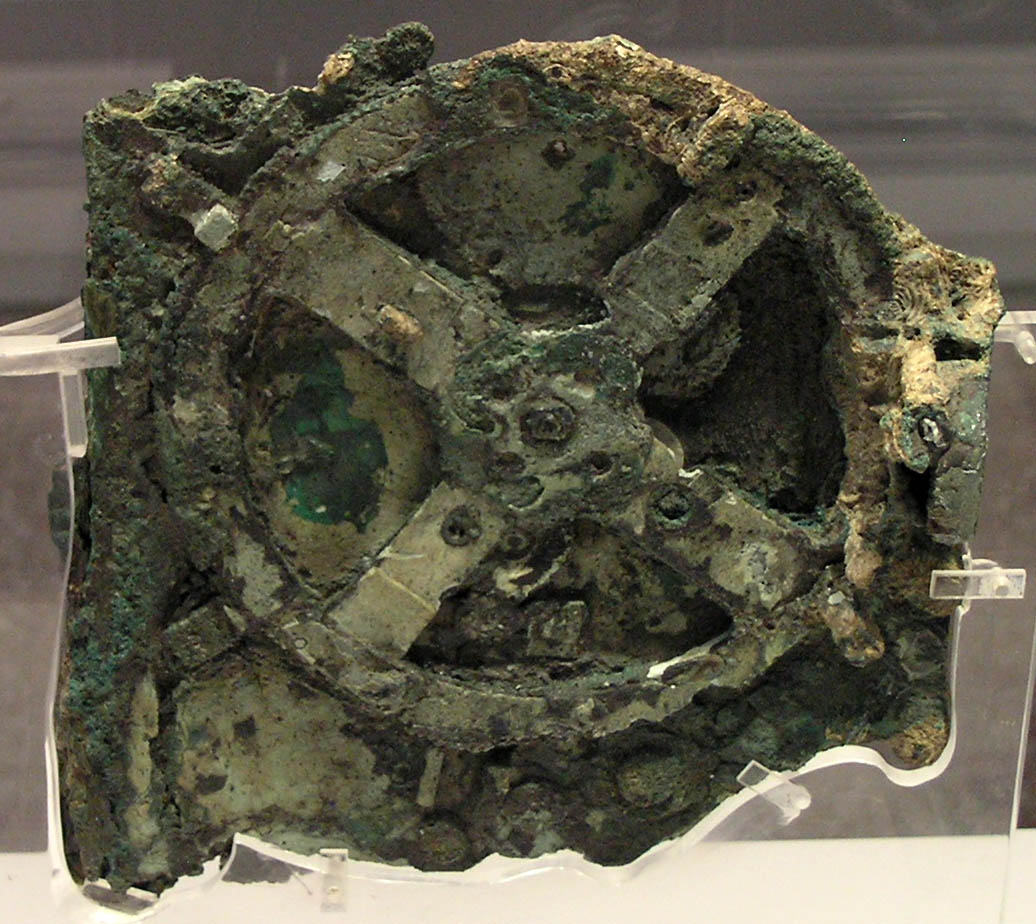Can you guess what the mechanism above is?
Answer (directly from Wikipedia): Antikythera mechanism fragment. The mechanism consists of a complex system of 32 wheels and plates with inscriptions relating to the signs of the zodiac and the months. The study of the fragments suggests that this was a kind of astrolabe used for marine navigation. The interpretation now generally accepted dates back to studies by Professor Derek de Solla Price, who was the first to suggest that the mechanism is a machine to calculate the solar and lunar calendar, that is to say, an ingenious machine to determine the time based on the movements of the sun and moon, their relationship (eclipses) and the movements of other stars and planets known at that time. The mechanism was probably built by an ingenious mechanic school Posidonius in Rhodes. Cicero, who visited the island in a. 79/78 C. reported that such devices were indeed designed by the Stoic philosopher Posidonius of Apamea. The design of the Antikythera mechanism appears to follow the tradition of Archimedes’ planetarium, and may be related to sundials. His modus operandi is based on the use of gears. The machine is dated 89 a. C. around and comes from the wreck found off the island of Antikythera. National Archaeological Museum, Athens, No. 15987.
